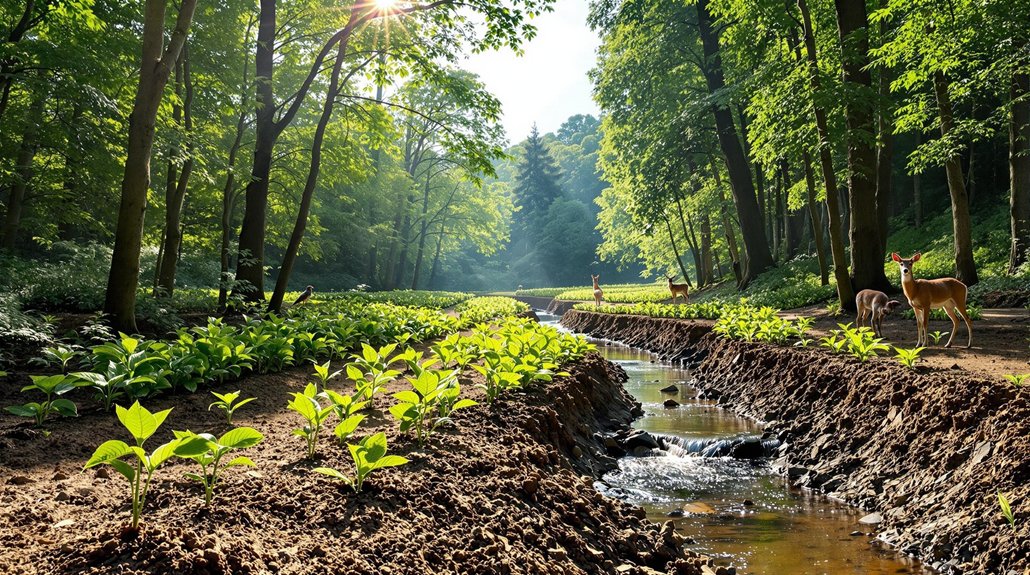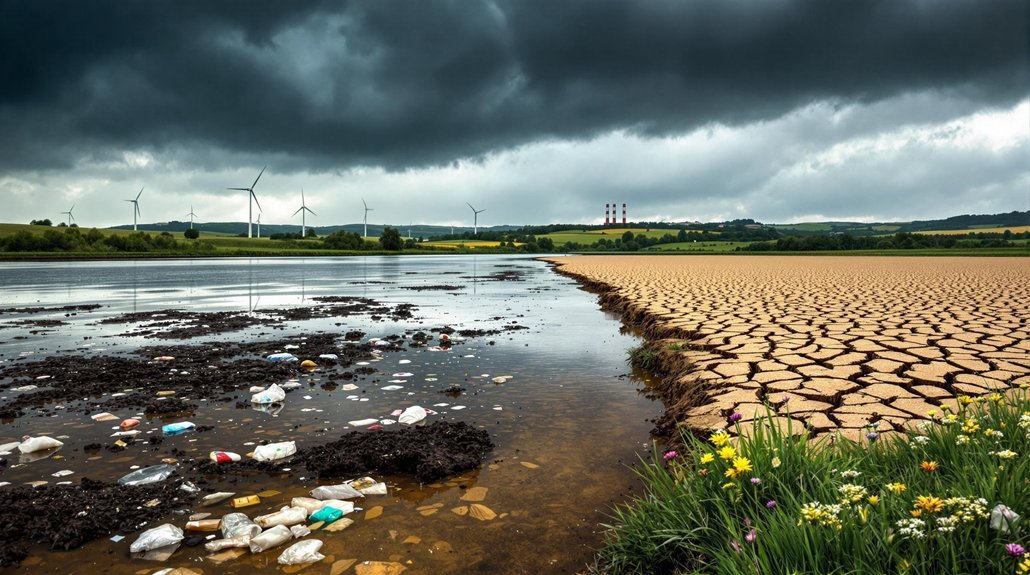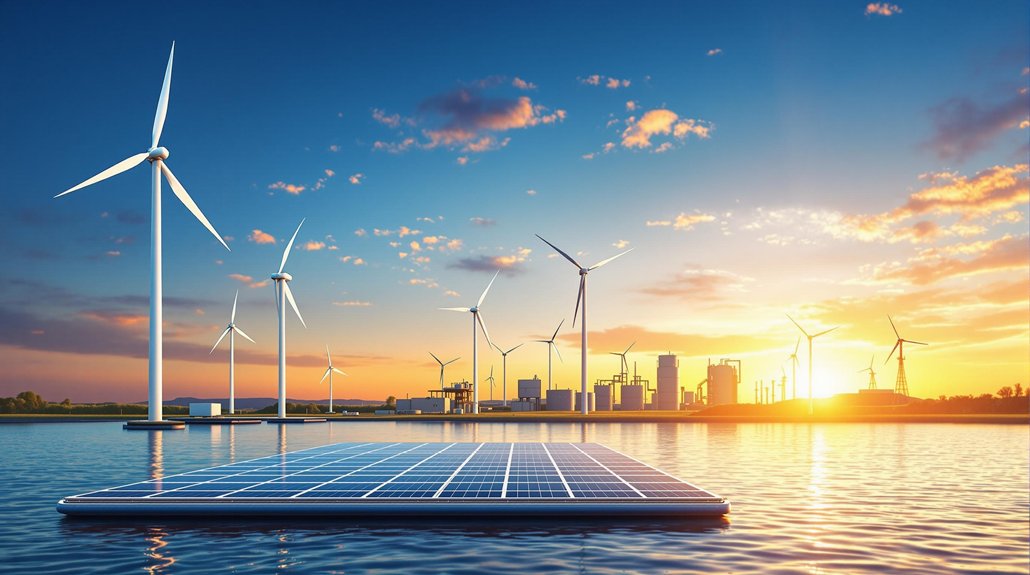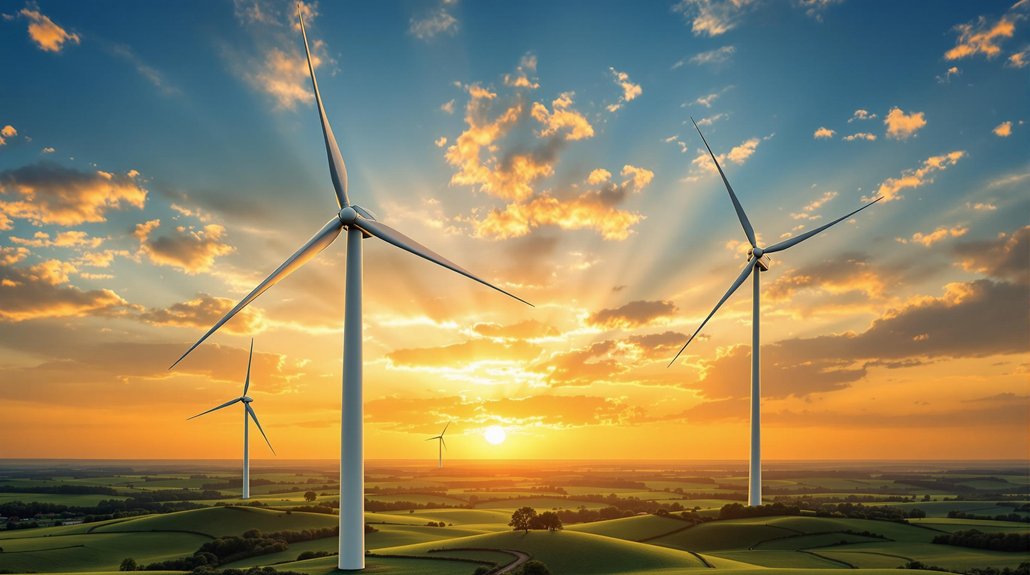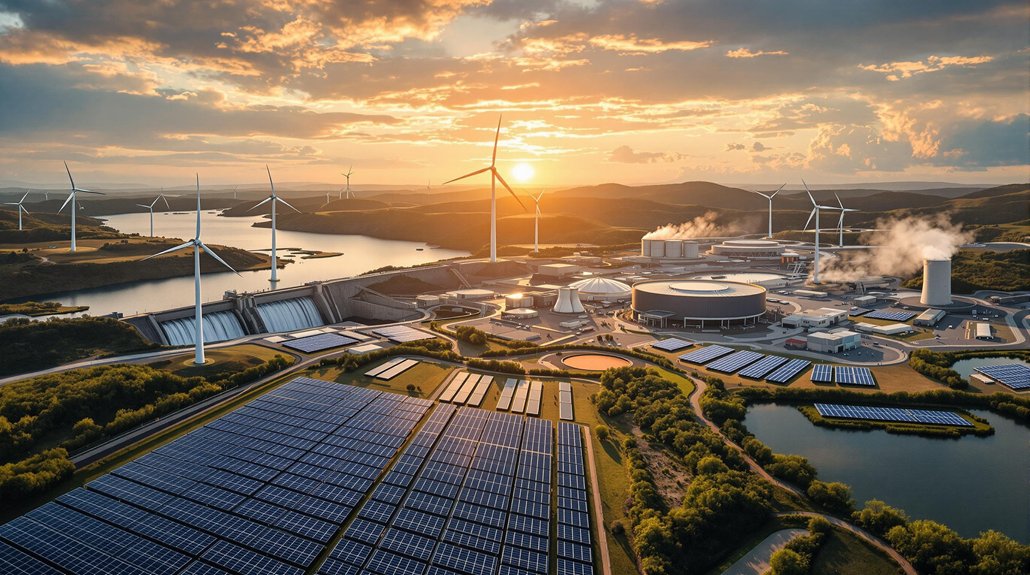Reforestation provides multiple environmental benefits. Trees absorb carbon dioxide, helping to combat climate change. They support biodiversity by creating habitats for numerous plant and animal species. Forest root systems prevent soil erosion and improve water quality. Trees also filter air pollutants and reduce urban heat. Additionally, forests deliver economic value through ecosystem services worth trillions annually. The environmental advantages extend far beyond what meets the eye.
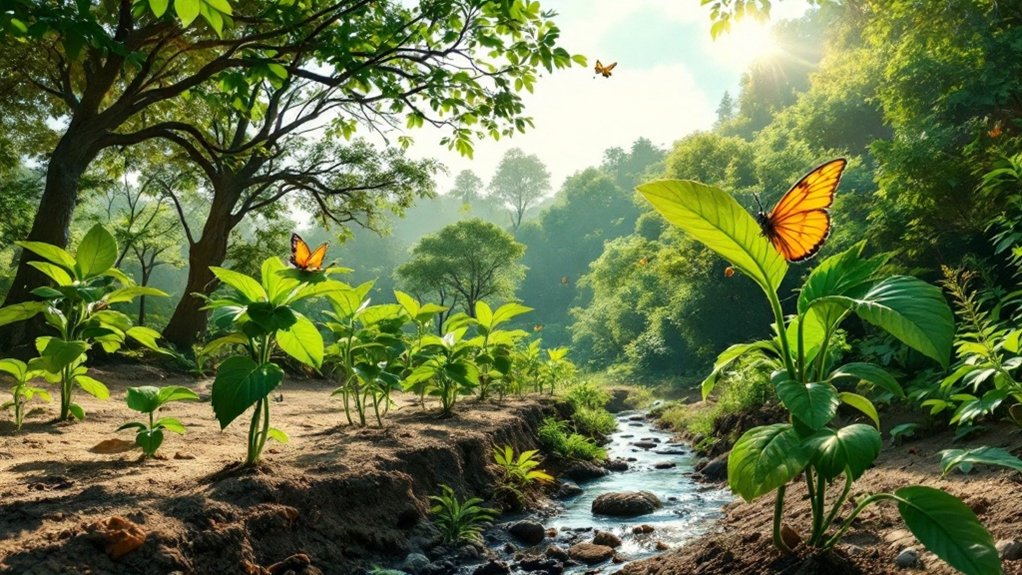
As countries around the world face growing environmental challenges, reforestation efforts are emerging as a crucial solution with multiple benefits. Trees play an essential role in absorbing carbon dioxide through photosynthesis, which helps fight climate change. One acre of forest can absorb approximately 2.5 tons of CO2 annually, with forests offsetting between 10-20% of U.S. emissions each year. This natural carbon sequestration is one of the most effective tools we have against rising greenhouse gas levels.
Forests are home to an incredible variety of life. They support about 80% of all land-based biodiversity, providing essential habitat for countless plant and animal species. Young forests have higher carbon storage capacity than older ones, making them particularly valuable in climate mitigation efforts. When degraded areas are reforested, wildlife returns as food sources and shelter become available. These restored areas also create important corridors that allow animals to migrate safely between larger habitats.
Trees’ extensive root systems help hold soil in place, preventing erosion that can devastate landscapes. They improve soil fertility and structure while increasing the ground’s ability to retain water. This soil protection is especially important in areas that have suffered from deforestation or land degradation, where replanting trees can help restore the land’s health. Reforestation creates local job opportunities through sustainable forestry management practices that support community development. Forest conservation and reforestation are directly aligned with multiple SDGs including those focused on climate action, clean water, and sustainable communities.
The water cycle also benefits from forests. Trees increase groundwater recharge, reduce flooding risks, and naturally filter water. A healthy forest can stabilize local water cycles and improve overall watershed health, ensuring cleaner water for surrounding communities.
Air quality improves considerably in forested areas. Trees filter harmful pollutants including ozone, carbon monoxide, and sulfur dioxide. In urban settings, they can lower air temperatures by 2-8°F and reduce the heat island effect. The oxygen released through photosynthesis further enhances air quality.
Beyond these environmental benefits, forests provide valuable ecosystem services worth approximately $125 trillion annually worldwide. These include timber, food, and medicinal resources, along with support for agricultural pollination and recreational opportunities. As climate concerns grow, reforestation offers a natural solution that addresses multiple environmental challenges simultaneously.
Frequently Asked Questions
How Long Does It Take for Reforested Areas to Become Effective Ecosystems?
Reforested areas develop into effective ecosystems gradually.
Initially, basic wildlife habitats form within five years.
By the 5-20 year mark, canopies close and wildlife habitats become more complex.
Between 20-50 years, forest structure becomes more sophisticated with improved soil fertility.
Full ecosystem functionality isn’t restored until after 50 years, when biodiversity reaches levels similar to natural forests and the area can better withstand environmental disturbances.
What Are the Costs Associated With Large-Scale Reforestation Projects?
Large-scale reforestation projects come with significant costs.
Land acquisition ranges from $500-$5,000 per acre, while site preparation can reach $25,830 per hectare. Initial expenses include seedlings ($0.50-$3.00 each) and equipment ($15,000-$40,000).
Ongoing maintenance costs $167-$2,421 per hectare annually for the first five years. Additional expenses cover environmental assessments, permits, and management.
Projects typically require 5-7 years before generating carbon credit revenue.
Can Reforestation Help Reverse Effects of Urban Heat Islands?
Reforestation can greatly reduce urban heat islands. Trees provide cooling through shade and water release from leaves.
Studies show urban areas with more trees are 2-7°F cooler than treeless zones. Strategic tree planting can lower building cooling costs by 20-50%.
Cities across the U.S. are implementing tree-planting programs in hot neighborhoods. However, these projects require careful planning for species selection and ongoing maintenance.
How Do Different Tree Species Compare for Carbon Sequestration Efficiency?
Different tree species vary considerably in carbon sequestration ability.
Hardwoods like sugar maple and oak store more carbon than softwoods due to their higher density. Coastal redwoods can sequester over 500,000 pounds of carbon, while oaks capture up to 48,000 pounds.
Young trees absorb carbon faster, but mature trees store more total carbon.
Mixed forests with multiple species sequester 70% more carbon than single-species plantings, with four-species mixtures performing best.
What Employment Opportunities Are Created Through Reforestation Initiatives?
Reforestation initiatives create numerous jobs across multiple sectors.
Direct positions include tree planters, nursery workers, and foresters. Supporting roles range from seed collectors to drone operators monitoring forest growth.
The field also offers opportunities in research, with scientists studying ideal planting methods and resilient tree varieties.
Community-focused jobs include environmental educators and grant writers who secure project funding.
These initiatives provide both seasonal and permanent employment options.
